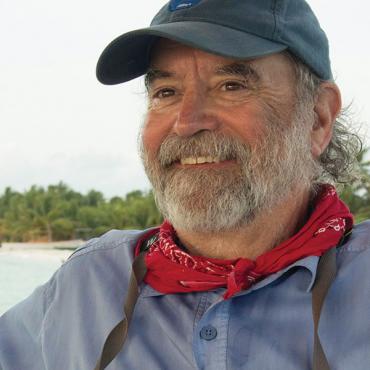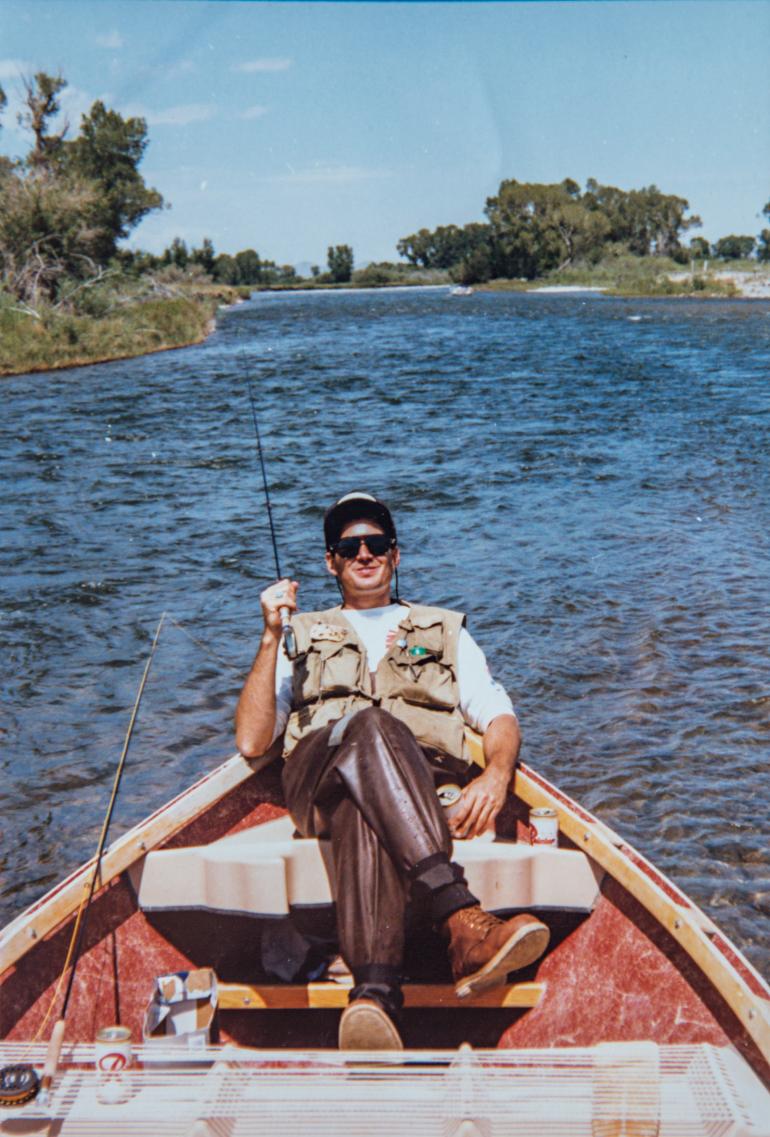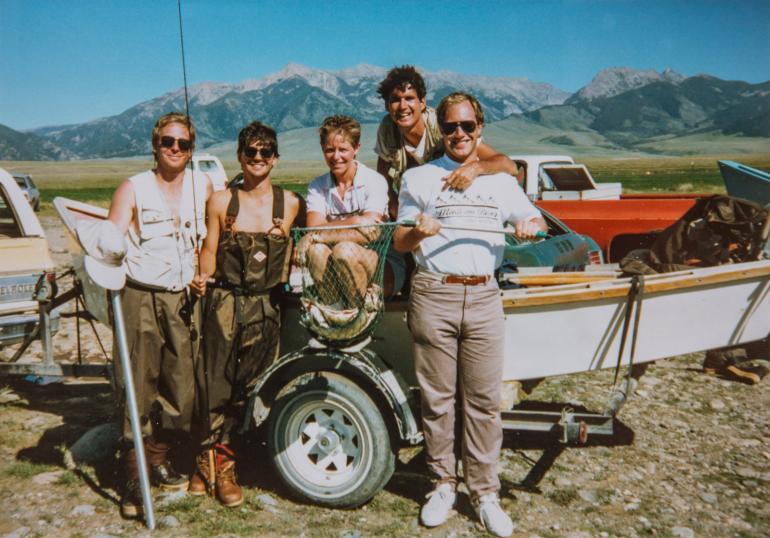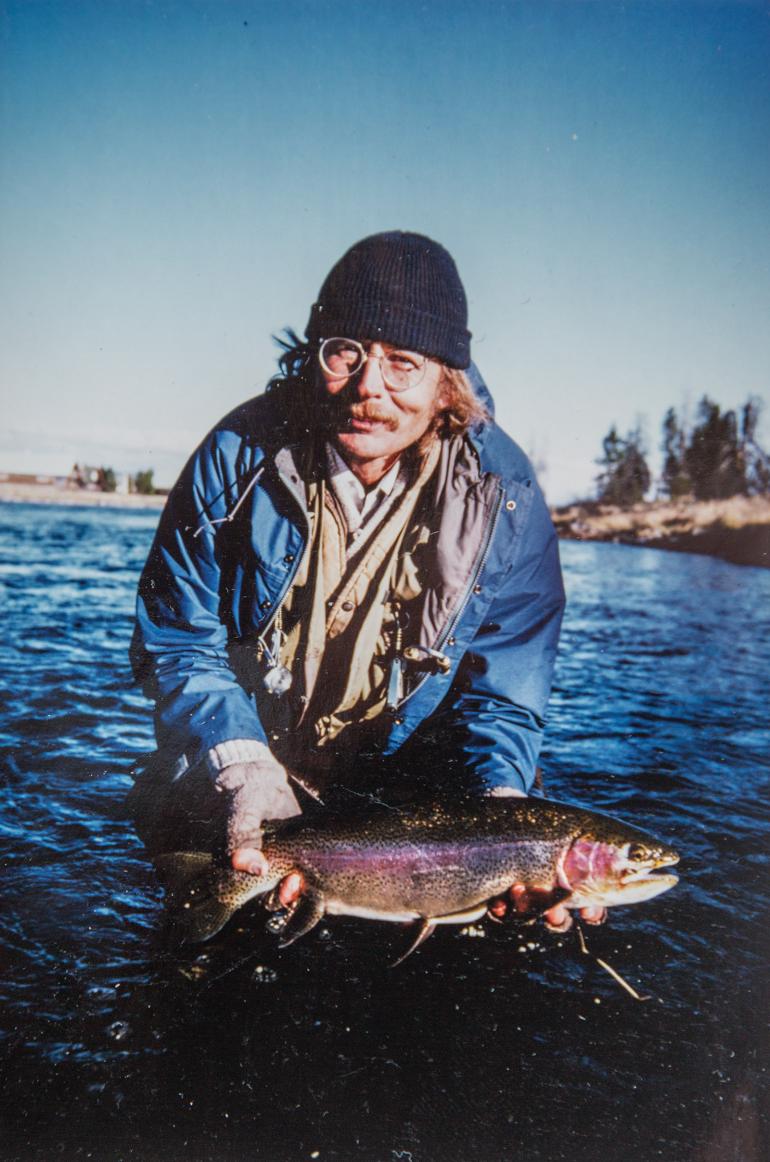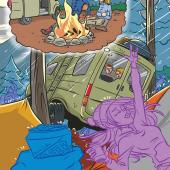Madison Memories
Reflections from the early days on the Madison.
All these years later, it’s hard for me to imagine a time when sagebrush smelled exotic, but it did that morning—pungent, pure, and alien. I still remember the dissonance between the stream’s clear, gurgling current and the arid terrain surrounding it. The three-day drive from home had left me bored and pouty, and my parents must have been exhausted. But we had finally reached the objective of our annual summer expedition: Montana.
The previous evening, after obtaining permission at the nearest ranch house, we had parked our vintage Airstream trailer on a flat spot in the prairie no more than a few minutes’ walk from the stream. Already a confirmed fishaholic despite my young age, I had risen at first light and headed to the water accompanied by the family dog. After assembling my gear—a well-worn Pflueger reel and a new Shakespeare glass rod that had miraculously arrived in the mail the morning of our departure—I reached into my creel, extracted my fly box, and began to study my options.
The list of possibilities read like this: Humpy, Goofus Bug, Royal Wulff, Grey Bivisible, Joe’s Hopper—all dry flies, as I had not yet learned to fish with anything else. Resemblance to living insects was largely impressionistic, but I had caught fish on all of them previously and they had earned my confidence. Furthermore, I had tied them myself, mainly of natural fur and feathers I had obtained with my .22 around our rural home in upstate New York. This left me deeply invested in them, despite the amateurish quality of the craftmanship. My tying bench looks different today, with a host of synthetic materials scattered among the pheasant feathers and bucktails that I still obtain myself.
Before I became one myself, I remember how tedious it was listening to grizzled old-timers grouse about how much better it used to be (no matter what it was).
By the time we arrived in Montana that year, I had caught plenty of native brook trout around home, but in those little creeks an eight-inch specimen earned bragging rights. This was different, as I’d learned over several previous summers. This was Montana, home to rainbows and browns that took me down into my backing, forcing me to learn the rudiments of fighting fish instead of simply hoisting them up onto the bank like dead weight.
I had received new polarized glasses as a Christmas present and wore them proudly even though the sun was still so close to the horizon that they hurt my visual acuity more than they helped it. After a prolonged period of reflection, I picked a gaudy Wulff from my fly box and tied it to my tippet. Then I climbed down the bank, felt the delicious chill of the water as it climbed my legs, and began to fish.
The preceding tale contains several clues that should help orient the reader in time as well as space. A creel in which to carry dead fish home for the frying pan? Obviously well before catch-and release. Bivisibles? I doubt that many contemporary anglers have heard of them, much less tied one. So, here’s the big reveal. Those events took place in 1956, when I was eight years old.
The world of fly fishing has certainly changed since then, and nowhere more so than on the storied waters of southwest Montana. After its recent explosion in popularity, it can be hard to appreciate what an obscure undertaking it was just one generation (all right, two generations) ago. I was fortunate to have a father who was an enthusiastic fly angler. Without his guidance, I might well have lost a decade or two on the water. None of my young friends fly fished, and hardly any of my father’s friends did, either. On the rare occasions when we encountered other anglers, it was not unusual to have one ask what we were doing. (The fine writer John Gierach had yet to coin the simplest answer: “Standing in the water waving a stick.”)
While we usually visited Yellowstone on those regular trips, enjoying some fine fishing while we were there, my main objectives were always the Big Hole and Madison drainages and the over-sized—at least to me—rainbows and browns they contained. My father wasn’t hard to convince, and I whined so persistently until we reached them that even my mother and younger siblings eventually yielded to my entreaties just to shut me up. Neither Dad nor I had even seen a real driftboat, although we quickly bought one and mastered it after we moved to the Pacific Northwest a few years later. There just weren’t many in Montana then, which may be hard to imagine for those accustomed to seeing them hatch like mayflies here every spring.
We made do with what we had, though, which was a battle-scarred, 18-foot Grumman aluminum canoe. Although better suited to the long backcountry paddle-and-portage trips we regularly made to Ontario and Quebec, it carried us reliably along countess miles of the Big Hole, and I can still remember my father bellowing instructions from the stern as we picked our way down the obstacle course that was the Madison. When we finally did obtain that first real driftboat, the ability to stand up and cast while underway felt like a miracle.
Before I became one myself, I remember how tedious it was listening to grizzled old-timers grouse about how much better it used to be (no matter what it was). That’s not where I’m going here. Fishing those waters then wasn’t necessarily better then, but it was certainly different. Those who appreciate the value of history should understand why exploring those differences is valuable today, to no one more than me.
Whenever we reached Montana I succumbed, like a kid having his first encounter with a six-pack of beer. I was hooked, and I knew where I would live someday when I was older and circumstances allowed.
Of course, we caught fish. They were all naïve back then and would rise to almost anything. We largely had the water to ourselves, for the internet didn’t exist and Norman Maclean was just starting to gather material for what would eventually become the book and then The Movie. However, I was experiencing something that went beyond the fish and the pristine water. I was setting down roots, even though they existed nowhere other than my imagination at the time.
It’s not that I grew up amidst urban blight. We lived on an 80-acre farm five miles from the Home of Baseball, even though that honorific was nothing more than a century-old Chamber of Commerce invention. In addition to those brook trout, the surrounding habitat held abundant grouse, squirrels, and rabbits. I hunted them all, and my father killed a whitetail buck every fall. However, whenever we reached Montana I succumbed, like a kid having his first encounter with a six-pack of beer. I was hooked, and I knew where I would live someday when I was older and circumstances allowed.
It took me a while to get there, but I never lost contact. While attending medical school in Seattle, I drove back to Montana at every opportunity, and when I crossed the border at Lookout Pass, I always stopped and kissed the ground—sappy, but true. My first stop was usually Rock Creek outside of Missoula. Working as a medical officer on the Fort Peck Reservation several years later, I dragged my driftboat to the Madison several times every summer and never complained about the long drive. When my interminable education and military obligations finally ended, I moved to Lewistown.
The halcyon days I spent fishing southwest Montana as a kid provided the keystone to that decision. I was hardly the only angler to be thus affected. Bozeman is experiencing explosive growth now, and many of the new arrivals are here for the same reasons I am, even though decades separate our time of arrival. Scenery, easy living, the outdoors in general and especially fly fishing have made us what we are today.
Now let’s flip the calendar back 60 years to the time and place described in my opening narrative. It took me a hundred yards of water to find my first fish, but then my buoyant deer hair Wulff disappeared as if by magic, as it floated down a riffle. When the fish finally found its way to my net, I stared at it in surprise and confusion. It was not the trout I expected, but something silvery gray, with inky spots on its flanks and a dorsal fin that looked as if it came from another planet. I had caught my first grayling, from the North Fork of the Big Hole, one of the last waters in the Lower 48 to support a fluvial population of these beautiful but fragile fish. Even after I caught hundreds of them three times its size when I lived in Alaska, I never forgot that first one.
And I never forgot the crucial role it played in leading me to spend my life in Montana.

